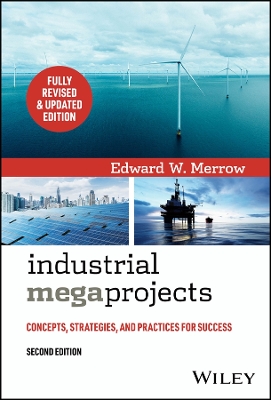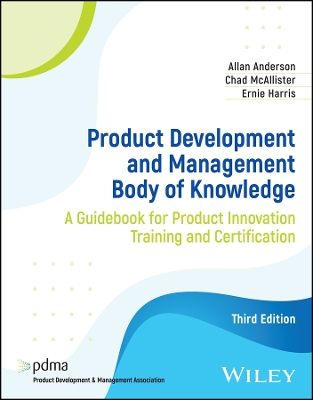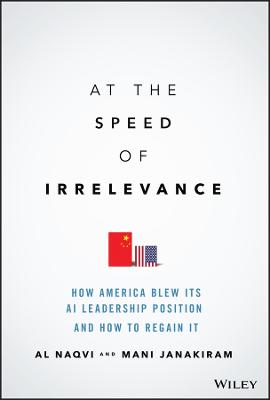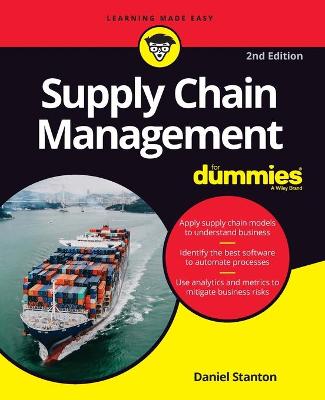Managing Packaging Design for Sustainable Development
 -15%
portes grátis
-15%
portes grátis
Managing Packaging Design for Sustainable Development
A Compass for Strategic Directions
Olsson, Annika; Hellstroem, Daniel
John Wiley & Sons Inc
01/2017
240
Mole
Inglês
9781119150930
15 a 20 dias
460
Descrição não disponível.
Preface iii
ACKNOWLEDGEMENTS viii
PART I FUNDAMENTALS OF PACKAGING DESIGN 21
1. Introduction to packaging 25
1.1 Multiple functions of packaging 26
1.2 Packaging legislations and regulations 31
1.2.1 Administrative legislation and regulations 33
1.2.2 Legislation and regulations for protecting the public 33
1.2.3 Legislation and regulations for protecting designs 34
1.2.4 Legislation and regulations for protecting the environment 34
1.3 Packaging Terminology 36
1.4 Packaging as a system 38
1.5 Packaging goes beyond a single discipline 40
1.6 Going multidisciplinary - Packaging Logistics 42
References 46
2. Sustainable development and packaging 49
2.1 Sustainable development goals 50
2.2 Three pillars of sustainable development 53
2.2.1 People 54
2.2.2 Planet 54
2.2.3 Profit 55
2.3 Looking back at the role of packaging 56
2.4 Misconceptions of packaging 59
2.4.1 Overpackaged or underpackaged? 60
2.4.2 Wasteful or useful? 62
2.4.3 How about the R's in waste hierarchies? 64
2.5 Packaging contributions to sustainable development 66
2.5.1 The reasons for packaging 67
2.5.2 Adding value for people, profit and planet 68
2.6 Packaging contributions to sustainable development for supply chains 70
2.6.1 The research on sustainable supply chains 70
2.6.2 The packaging impact in retail supply chains 72
References 74
3. Designing packaging 79
3.1 The complexity of packaging design 80
3.1.1 Layer one - packaging functions 81
3.1.2 Layer two - the packaging system 81
3.1.3 Layer three - functions and departments within organizations 82
3.1.4 Layer four - between organizations 82
3.1.5 Layer five - end consumers 83
3.1.6 Layer six - distribution channels 84
3.1.7 Layer seven - extending or closing the loop in circular systems 85
3.1.8 Layer eight - time 86
3.2 Challenges of dealing with the complexity 87
3.2.1 Taking a holistic approach to packaging 89
3.2.2 Integrating form and function 91
3.2.3 Making trade-off decisions 93
3.2.4 Sharing the risks and gains 95
3.3 Organizing and managing packaging design 98
3.3.1 Design thinking processes 99
3.3.2 Managing the team 103
3.4 Tools for packaging design 107
3.4.1 Divergent phase tools -identifying needs and generating ideas 109
3.4.2 Convergent phase tools - decision-making support 116
3.4.3 Packaging design software and guidelines 120
3.4.4 Strategic guidance towards sustainable development 122
References 124
PART II A PACKAGING DESIGN COMPASS FOR SUSTAINABLE DEVELOPMENT 133
4. Introducing the compass 139
4.1 Points of the compass 140
4.2 Users of the compass 141
4.3 How to navigate 142
4.4 The making of the compass - our methodology 144
References 147
5. The directions of the compass 148
5.1 Protection 148
5.2 Material use 151
5.3 Fill rate 153
5.4 Apportionment 155
5.5 User-friendliness 158
5.6 Information and communication 160
5.6.1 Information 161
5.6.2 Communication 163
References 165
PART III PRACTICAL AND ILLUSTRATIVE CASES 167
6. Product protection 173
6.1 Better quality grapes for the people 175
6.1.1 The table grapes packaging system 177
6.1.2 The table grapes supply chain and challenges 179
6.1.3 Supply chain implications 184
6.2 Cheap is not always the best: The citrus box 187
6.2.1 The citrus packaging system 188
6.2.2 The citrus supply chain 188
6.2.3 Key handling activities 189
6.2.4 Challenges in the citrus supply chain 190
6.2.5 Supply chain implications 192
6.3 IKEA Ektorp sofas: Knock-down boxing 196
6.3.1 The previous packaging solution 197
6.3.2 Managing damages 197
6.3.3 Packaging redesign and impacts 198
6.3.4 Concluding remarks - knock-down boxing 200
References 203
7. Material Use 207
7.1 Know and adapt your food packaging material 209
7.1.1 Food protection through packaging 209
7.1.2 Different packaging materials 211
7.1.3 Consumer preferences 214
7.1.4 Packaging technologies for increased shelf life 215
7.2 Can or no can? The Tetra Recart retortable package 222
7.2.1 The package configuration and the redesign 222
7.2.2 The comparison - sustainability implications 226
7.3 Wine in glass or plastic bottles 233
7.3.1 Packaging system 234
7.3.2 Supply chain description 234
7.3.3 From glass to PET 235
7.3.4 Other packaging alternatives 237
7.3.5 Implications from using PET wine bottles 238
7.4 Facing the brand: The redesign of a packaging system 242
7.4.1 The package configuration and the redesign 243
7.4.2 The comparison of the packaging systems 244
7.4.3 Sustainability implications 246
7.4.4 Concluding remarks 249
References 251
8. Fill rate 254
8.1 Detergent powder packaging: Less is more 256
8.1.1 The detergent powder packaging system 257
8.1.2 The detergent powder supply chain 258
8.1.3 Suggested packaging improvements 259
8.1.4 Potential implications 261
8.1.5 Concluding remarks - less is more 262
8.2 Ice cream packaging: Brick or elliptic shape? 265
8.2.1 GB Glace brick packaging system 265
8.2.2 SIA Glass elliptic packaging system 266
8.2.3 Supply chain descriptions 268
8.2.4 Comparing packaging solutions: a scenario 269
8.2.5 Concluding remarks - brick or elliptic shape? 272
8.3 IKEA loading ledges: It's not rocket science, but it is about space 277
8.3.1 Implementation - from 2001 to 2010 279
8.3.2 Supply chain impact 280
8.3.3 Concluding remarks - It's not rocket science, but it is about space 285
8.3.4 Epilogue 288
References 290
9. Apportionment 292
9.1 Apportion for less product waste: Salmon packaging 294
9.1.1 The salmon packaging system 296
9.1.2 The impact of primary package apportionment 297
9.1.3 Concluding remarks 299
9.2 Appropriate numbers of toothpaste tubes in shelf-ready packaging 302
9.2.1 The toothpaste packaging system 302
9.2.2 The toothpaste supply chain 303
9.2.3 Reapportionment for easier handling and improved fill rates 304
9.2.4 Supply chain implications 305
9.3 The quantity of bottles in wine and liquor boxes 310
9.3.1 The wine packaging system 310
9.3.2 The wine supply chain in South Africa 311
9.3.3 Improvement potentials identified 312
9.3.4 The Absolut Vodka packaging system 313
9.3.5 The Absolut Vodka Supply chain 314
9.3.6 Potential packaging modifications and supply chain implications 315
9.3.7 Concluding remarks - "Bottles and boxes for wine and liquor" 317
References 319
10. User-friendliness 320
10.1 Pharmaceutical packaging: Does size matter? 322
10.1.1 The Alvedon supply chain 323
10.1.2 The Alvedon packaging system 323
10.1.3 Implications from a user-friendliness perspective 325
10.1.4 Sustainability implications 328
10.2 Less frustration, less injury and less handling: Controlled delamination materials 332
10.2.1 The controlled delamination invention 332
10.2.2 CDM Sustainability implications 335
10.3 TORK hand towels: Carrying to caring 339
10.3.1 The previous TORK packaging system 340
10.3.2 The TORK supply chain 340
10.3.3 Packaging evaluation and redesign 342
10.3.4 Supply chain impact 343
10.3.5 Concluding remarks - carrying to caring 344
References 348
11. Information and communication 350
11.1 How do you if the milk is sour? - An innovative sensor technique 352
11.1.1 Implications of supply chain implementation 355
11.1.2 Sustainability implications for the indicator invention 359
11.2 Mobile communication through package size and graphics 364
11.2.1 The packaging system 365
11.2.2 Packaging impacts on the markets 366
11.2.3 Suggestions for primary packaging improvements 368
11.2.4 Sustainable supply chain implications 369
11.3 Roll containers for dairy products: Connecting atoms and bits 373
11.3.1 Implementing a tracking system 375
11.3.2 Implementation results 376
11.3.3 Concluding remarks - connecting atoms and bits 378
11.4 What does the silent salesman do for the sustainable society? 383
References 390
Author Biographies 393
AFTERWORD 394
Index 396
ACKNOWLEDGEMENTS viii
PART I FUNDAMENTALS OF PACKAGING DESIGN 21
1. Introduction to packaging 25
1.1 Multiple functions of packaging 26
1.2 Packaging legislations and regulations 31
1.2.1 Administrative legislation and regulations 33
1.2.2 Legislation and regulations for protecting the public 33
1.2.3 Legislation and regulations for protecting designs 34
1.2.4 Legislation and regulations for protecting the environment 34
1.3 Packaging Terminology 36
1.4 Packaging as a system 38
1.5 Packaging goes beyond a single discipline 40
1.6 Going multidisciplinary - Packaging Logistics 42
References 46
2. Sustainable development and packaging 49
2.1 Sustainable development goals 50
2.2 Three pillars of sustainable development 53
2.2.1 People 54
2.2.2 Planet 54
2.2.3 Profit 55
2.3 Looking back at the role of packaging 56
2.4 Misconceptions of packaging 59
2.4.1 Overpackaged or underpackaged? 60
2.4.2 Wasteful or useful? 62
2.4.3 How about the R's in waste hierarchies? 64
2.5 Packaging contributions to sustainable development 66
2.5.1 The reasons for packaging 67
2.5.2 Adding value for people, profit and planet 68
2.6 Packaging contributions to sustainable development for supply chains 70
2.6.1 The research on sustainable supply chains 70
2.6.2 The packaging impact in retail supply chains 72
References 74
3. Designing packaging 79
3.1 The complexity of packaging design 80
3.1.1 Layer one - packaging functions 81
3.1.2 Layer two - the packaging system 81
3.1.3 Layer three - functions and departments within organizations 82
3.1.4 Layer four - between organizations 82
3.1.5 Layer five - end consumers 83
3.1.6 Layer six - distribution channels 84
3.1.7 Layer seven - extending or closing the loop in circular systems 85
3.1.8 Layer eight - time 86
3.2 Challenges of dealing with the complexity 87
3.2.1 Taking a holistic approach to packaging 89
3.2.2 Integrating form and function 91
3.2.3 Making trade-off decisions 93
3.2.4 Sharing the risks and gains 95
3.3 Organizing and managing packaging design 98
3.3.1 Design thinking processes 99
3.3.2 Managing the team 103
3.4 Tools for packaging design 107
3.4.1 Divergent phase tools -identifying needs and generating ideas 109
3.4.2 Convergent phase tools - decision-making support 116
3.4.3 Packaging design software and guidelines 120
3.4.4 Strategic guidance towards sustainable development 122
References 124
PART II A PACKAGING DESIGN COMPASS FOR SUSTAINABLE DEVELOPMENT 133
4. Introducing the compass 139
4.1 Points of the compass 140
4.2 Users of the compass 141
4.3 How to navigate 142
4.4 The making of the compass - our methodology 144
References 147
5. The directions of the compass 148
5.1 Protection 148
5.2 Material use 151
5.3 Fill rate 153
5.4 Apportionment 155
5.5 User-friendliness 158
5.6 Information and communication 160
5.6.1 Information 161
5.6.2 Communication 163
References 165
PART III PRACTICAL AND ILLUSTRATIVE CASES 167
6. Product protection 173
6.1 Better quality grapes for the people 175
6.1.1 The table grapes packaging system 177
6.1.2 The table grapes supply chain and challenges 179
6.1.3 Supply chain implications 184
6.2 Cheap is not always the best: The citrus box 187
6.2.1 The citrus packaging system 188
6.2.2 The citrus supply chain 188
6.2.3 Key handling activities 189
6.2.4 Challenges in the citrus supply chain 190
6.2.5 Supply chain implications 192
6.3 IKEA Ektorp sofas: Knock-down boxing 196
6.3.1 The previous packaging solution 197
6.3.2 Managing damages 197
6.3.3 Packaging redesign and impacts 198
6.3.4 Concluding remarks - knock-down boxing 200
References 203
7. Material Use 207
7.1 Know and adapt your food packaging material 209
7.1.1 Food protection through packaging 209
7.1.2 Different packaging materials 211
7.1.3 Consumer preferences 214
7.1.4 Packaging technologies for increased shelf life 215
7.2 Can or no can? The Tetra Recart retortable package 222
7.2.1 The package configuration and the redesign 222
7.2.2 The comparison - sustainability implications 226
7.3 Wine in glass or plastic bottles 233
7.3.1 Packaging system 234
7.3.2 Supply chain description 234
7.3.3 From glass to PET 235
7.3.4 Other packaging alternatives 237
7.3.5 Implications from using PET wine bottles 238
7.4 Facing the brand: The redesign of a packaging system 242
7.4.1 The package configuration and the redesign 243
7.4.2 The comparison of the packaging systems 244
7.4.3 Sustainability implications 246
7.4.4 Concluding remarks 249
References 251
8. Fill rate 254
8.1 Detergent powder packaging: Less is more 256
8.1.1 The detergent powder packaging system 257
8.1.2 The detergent powder supply chain 258
8.1.3 Suggested packaging improvements 259
8.1.4 Potential implications 261
8.1.5 Concluding remarks - less is more 262
8.2 Ice cream packaging: Brick or elliptic shape? 265
8.2.1 GB Glace brick packaging system 265
8.2.2 SIA Glass elliptic packaging system 266
8.2.3 Supply chain descriptions 268
8.2.4 Comparing packaging solutions: a scenario 269
8.2.5 Concluding remarks - brick or elliptic shape? 272
8.3 IKEA loading ledges: It's not rocket science, but it is about space 277
8.3.1 Implementation - from 2001 to 2010 279
8.3.2 Supply chain impact 280
8.3.3 Concluding remarks - It's not rocket science, but it is about space 285
8.3.4 Epilogue 288
References 290
9. Apportionment 292
9.1 Apportion for less product waste: Salmon packaging 294
9.1.1 The salmon packaging system 296
9.1.2 The impact of primary package apportionment 297
9.1.3 Concluding remarks 299
9.2 Appropriate numbers of toothpaste tubes in shelf-ready packaging 302
9.2.1 The toothpaste packaging system 302
9.2.2 The toothpaste supply chain 303
9.2.3 Reapportionment for easier handling and improved fill rates 304
9.2.4 Supply chain implications 305
9.3 The quantity of bottles in wine and liquor boxes 310
9.3.1 The wine packaging system 310
9.3.2 The wine supply chain in South Africa 311
9.3.3 Improvement potentials identified 312
9.3.4 The Absolut Vodka packaging system 313
9.3.5 The Absolut Vodka Supply chain 314
9.3.6 Potential packaging modifications and supply chain implications 315
9.3.7 Concluding remarks - "Bottles and boxes for wine and liquor" 317
References 319
10. User-friendliness 320
10.1 Pharmaceutical packaging: Does size matter? 322
10.1.1 The Alvedon supply chain 323
10.1.2 The Alvedon packaging system 323
10.1.3 Implications from a user-friendliness perspective 325
10.1.4 Sustainability implications 328
10.2 Less frustration, less injury and less handling: Controlled delamination materials 332
10.2.1 The controlled delamination invention 332
10.2.2 CDM Sustainability implications 335
10.3 TORK hand towels: Carrying to caring 339
10.3.1 The previous TORK packaging system 340
10.3.2 The TORK supply chain 340
10.3.3 Packaging evaluation and redesign 342
10.3.4 Supply chain impact 343
10.3.5 Concluding remarks - carrying to caring 344
References 348
11. Information and communication 350
11.1 How do you if the milk is sour? - An innovative sensor technique 352
11.1.1 Implications of supply chain implementation 355
11.1.2 Sustainability implications for the indicator invention 359
11.2 Mobile communication through package size and graphics 364
11.2.1 The packaging system 365
11.2.2 Packaging impacts on the markets 366
11.2.3 Suggestions for primary packaging improvements 368
11.2.4 Sustainable supply chain implications 369
11.3 Roll containers for dairy products: Connecting atoms and bits 373
11.3.1 Implementing a tracking system 375
11.3.2 Implementation results 376
11.3.3 Concluding remarks - connecting atoms and bits 378
11.4 What does the silent salesman do for the sustainable society? 383
References 390
Author Biographies 393
AFTERWORD 394
Index 396
Este título pertence ao(s) assunto(s) indicados(s). Para ver outros títulos clique no assunto desejado.
Packaging; packaging design, packaging innovation, sustainable development, logistics; design; sustainability; operations management; production, CSR (Corporate social responsibility)
Preface iii
ACKNOWLEDGEMENTS viii
PART I FUNDAMENTALS OF PACKAGING DESIGN 21
1. Introduction to packaging 25
1.1 Multiple functions of packaging 26
1.2 Packaging legislations and regulations 31
1.2.1 Administrative legislation and regulations 33
1.2.2 Legislation and regulations for protecting the public 33
1.2.3 Legislation and regulations for protecting designs 34
1.2.4 Legislation and regulations for protecting the environment 34
1.3 Packaging Terminology 36
1.4 Packaging as a system 38
1.5 Packaging goes beyond a single discipline 40
1.6 Going multidisciplinary - Packaging Logistics 42
References 46
2. Sustainable development and packaging 49
2.1 Sustainable development goals 50
2.2 Three pillars of sustainable development 53
2.2.1 People 54
2.2.2 Planet 54
2.2.3 Profit 55
2.3 Looking back at the role of packaging 56
2.4 Misconceptions of packaging 59
2.4.1 Overpackaged or underpackaged? 60
2.4.2 Wasteful or useful? 62
2.4.3 How about the R's in waste hierarchies? 64
2.5 Packaging contributions to sustainable development 66
2.5.1 The reasons for packaging 67
2.5.2 Adding value for people, profit and planet 68
2.6 Packaging contributions to sustainable development for supply chains 70
2.6.1 The research on sustainable supply chains 70
2.6.2 The packaging impact in retail supply chains 72
References 74
3. Designing packaging 79
3.1 The complexity of packaging design 80
3.1.1 Layer one - packaging functions 81
3.1.2 Layer two - the packaging system 81
3.1.3 Layer three - functions and departments within organizations 82
3.1.4 Layer four - between organizations 82
3.1.5 Layer five - end consumers 83
3.1.6 Layer six - distribution channels 84
3.1.7 Layer seven - extending or closing the loop in circular systems 85
3.1.8 Layer eight - time 86
3.2 Challenges of dealing with the complexity 87
3.2.1 Taking a holistic approach to packaging 89
3.2.2 Integrating form and function 91
3.2.3 Making trade-off decisions 93
3.2.4 Sharing the risks and gains 95
3.3 Organizing and managing packaging design 98
3.3.1 Design thinking processes 99
3.3.2 Managing the team 103
3.4 Tools for packaging design 107
3.4.1 Divergent phase tools -identifying needs and generating ideas 109
3.4.2 Convergent phase tools - decision-making support 116
3.4.3 Packaging design software and guidelines 120
3.4.4 Strategic guidance towards sustainable development 122
References 124
PART II A PACKAGING DESIGN COMPASS FOR SUSTAINABLE DEVELOPMENT 133
4. Introducing the compass 139
4.1 Points of the compass 140
4.2 Users of the compass 141
4.3 How to navigate 142
4.4 The making of the compass - our methodology 144
References 147
5. The directions of the compass 148
5.1 Protection 148
5.2 Material use 151
5.3 Fill rate 153
5.4 Apportionment 155
5.5 User-friendliness 158
5.6 Information and communication 160
5.6.1 Information 161
5.6.2 Communication 163
References 165
PART III PRACTICAL AND ILLUSTRATIVE CASES 167
6. Product protection 173
6.1 Better quality grapes for the people 175
6.1.1 The table grapes packaging system 177
6.1.2 The table grapes supply chain and challenges 179
6.1.3 Supply chain implications 184
6.2 Cheap is not always the best: The citrus box 187
6.2.1 The citrus packaging system 188
6.2.2 The citrus supply chain 188
6.2.3 Key handling activities 189
6.2.4 Challenges in the citrus supply chain 190
6.2.5 Supply chain implications 192
6.3 IKEA Ektorp sofas: Knock-down boxing 196
6.3.1 The previous packaging solution 197
6.3.2 Managing damages 197
6.3.3 Packaging redesign and impacts 198
6.3.4 Concluding remarks - knock-down boxing 200
References 203
7. Material Use 207
7.1 Know and adapt your food packaging material 209
7.1.1 Food protection through packaging 209
7.1.2 Different packaging materials 211
7.1.3 Consumer preferences 214
7.1.4 Packaging technologies for increased shelf life 215
7.2 Can or no can? The Tetra Recart retortable package 222
7.2.1 The package configuration and the redesign 222
7.2.2 The comparison - sustainability implications 226
7.3 Wine in glass or plastic bottles 233
7.3.1 Packaging system 234
7.3.2 Supply chain description 234
7.3.3 From glass to PET 235
7.3.4 Other packaging alternatives 237
7.3.5 Implications from using PET wine bottles 238
7.4 Facing the brand: The redesign of a packaging system 242
7.4.1 The package configuration and the redesign 243
7.4.2 The comparison of the packaging systems 244
7.4.3 Sustainability implications 246
7.4.4 Concluding remarks 249
References 251
8. Fill rate 254
8.1 Detergent powder packaging: Less is more 256
8.1.1 The detergent powder packaging system 257
8.1.2 The detergent powder supply chain 258
8.1.3 Suggested packaging improvements 259
8.1.4 Potential implications 261
8.1.5 Concluding remarks - less is more 262
8.2 Ice cream packaging: Brick or elliptic shape? 265
8.2.1 GB Glace brick packaging system 265
8.2.2 SIA Glass elliptic packaging system 266
8.2.3 Supply chain descriptions 268
8.2.4 Comparing packaging solutions: a scenario 269
8.2.5 Concluding remarks - brick or elliptic shape? 272
8.3 IKEA loading ledges: It's not rocket science, but it is about space 277
8.3.1 Implementation - from 2001 to 2010 279
8.3.2 Supply chain impact 280
8.3.3 Concluding remarks - It's not rocket science, but it is about space 285
8.3.4 Epilogue 288
References 290
9. Apportionment 292
9.1 Apportion for less product waste: Salmon packaging 294
9.1.1 The salmon packaging system 296
9.1.2 The impact of primary package apportionment 297
9.1.3 Concluding remarks 299
9.2 Appropriate numbers of toothpaste tubes in shelf-ready packaging 302
9.2.1 The toothpaste packaging system 302
9.2.2 The toothpaste supply chain 303
9.2.3 Reapportionment for easier handling and improved fill rates 304
9.2.4 Supply chain implications 305
9.3 The quantity of bottles in wine and liquor boxes 310
9.3.1 The wine packaging system 310
9.3.2 The wine supply chain in South Africa 311
9.3.3 Improvement potentials identified 312
9.3.4 The Absolut Vodka packaging system 313
9.3.5 The Absolut Vodka Supply chain 314
9.3.6 Potential packaging modifications and supply chain implications 315
9.3.7 Concluding remarks - "Bottles and boxes for wine and liquor" 317
References 319
10. User-friendliness 320
10.1 Pharmaceutical packaging: Does size matter? 322
10.1.1 The Alvedon supply chain 323
10.1.2 The Alvedon packaging system 323
10.1.3 Implications from a user-friendliness perspective 325
10.1.4 Sustainability implications 328
10.2 Less frustration, less injury and less handling: Controlled delamination materials 332
10.2.1 The controlled delamination invention 332
10.2.2 CDM Sustainability implications 335
10.3 TORK hand towels: Carrying to caring 339
10.3.1 The previous TORK packaging system 340
10.3.2 The TORK supply chain 340
10.3.3 Packaging evaluation and redesign 342
10.3.4 Supply chain impact 343
10.3.5 Concluding remarks - carrying to caring 344
References 348
11. Information and communication 350
11.1 How do you if the milk is sour? - An innovative sensor technique 352
11.1.1 Implications of supply chain implementation 355
11.1.2 Sustainability implications for the indicator invention 359
11.2 Mobile communication through package size and graphics 364
11.2.1 The packaging system 365
11.2.2 Packaging impacts on the markets 366
11.2.3 Suggestions for primary packaging improvements 368
11.2.4 Sustainable supply chain implications 369
11.3 Roll containers for dairy products: Connecting atoms and bits 373
11.3.1 Implementing a tracking system 375
11.3.2 Implementation results 376
11.3.3 Concluding remarks - connecting atoms and bits 378
11.4 What does the silent salesman do for the sustainable society? 383
References 390
Author Biographies 393
AFTERWORD 394
Index 396
ACKNOWLEDGEMENTS viii
PART I FUNDAMENTALS OF PACKAGING DESIGN 21
1. Introduction to packaging 25
1.1 Multiple functions of packaging 26
1.2 Packaging legislations and regulations 31
1.2.1 Administrative legislation and regulations 33
1.2.2 Legislation and regulations for protecting the public 33
1.2.3 Legislation and regulations for protecting designs 34
1.2.4 Legislation and regulations for protecting the environment 34
1.3 Packaging Terminology 36
1.4 Packaging as a system 38
1.5 Packaging goes beyond a single discipline 40
1.6 Going multidisciplinary - Packaging Logistics 42
References 46
2. Sustainable development and packaging 49
2.1 Sustainable development goals 50
2.2 Three pillars of sustainable development 53
2.2.1 People 54
2.2.2 Planet 54
2.2.3 Profit 55
2.3 Looking back at the role of packaging 56
2.4 Misconceptions of packaging 59
2.4.1 Overpackaged or underpackaged? 60
2.4.2 Wasteful or useful? 62
2.4.3 How about the R's in waste hierarchies? 64
2.5 Packaging contributions to sustainable development 66
2.5.1 The reasons for packaging 67
2.5.2 Adding value for people, profit and planet 68
2.6 Packaging contributions to sustainable development for supply chains 70
2.6.1 The research on sustainable supply chains 70
2.6.2 The packaging impact in retail supply chains 72
References 74
3. Designing packaging 79
3.1 The complexity of packaging design 80
3.1.1 Layer one - packaging functions 81
3.1.2 Layer two - the packaging system 81
3.1.3 Layer three - functions and departments within organizations 82
3.1.4 Layer four - between organizations 82
3.1.5 Layer five - end consumers 83
3.1.6 Layer six - distribution channels 84
3.1.7 Layer seven - extending or closing the loop in circular systems 85
3.1.8 Layer eight - time 86
3.2 Challenges of dealing with the complexity 87
3.2.1 Taking a holistic approach to packaging 89
3.2.2 Integrating form and function 91
3.2.3 Making trade-off decisions 93
3.2.4 Sharing the risks and gains 95
3.3 Organizing and managing packaging design 98
3.3.1 Design thinking processes 99
3.3.2 Managing the team 103
3.4 Tools for packaging design 107
3.4.1 Divergent phase tools -identifying needs and generating ideas 109
3.4.2 Convergent phase tools - decision-making support 116
3.4.3 Packaging design software and guidelines 120
3.4.4 Strategic guidance towards sustainable development 122
References 124
PART II A PACKAGING DESIGN COMPASS FOR SUSTAINABLE DEVELOPMENT 133
4. Introducing the compass 139
4.1 Points of the compass 140
4.2 Users of the compass 141
4.3 How to navigate 142
4.4 The making of the compass - our methodology 144
References 147
5. The directions of the compass 148
5.1 Protection 148
5.2 Material use 151
5.3 Fill rate 153
5.4 Apportionment 155
5.5 User-friendliness 158
5.6 Information and communication 160
5.6.1 Information 161
5.6.2 Communication 163
References 165
PART III PRACTICAL AND ILLUSTRATIVE CASES 167
6. Product protection 173
6.1 Better quality grapes for the people 175
6.1.1 The table grapes packaging system 177
6.1.2 The table grapes supply chain and challenges 179
6.1.3 Supply chain implications 184
6.2 Cheap is not always the best: The citrus box 187
6.2.1 The citrus packaging system 188
6.2.2 The citrus supply chain 188
6.2.3 Key handling activities 189
6.2.4 Challenges in the citrus supply chain 190
6.2.5 Supply chain implications 192
6.3 IKEA Ektorp sofas: Knock-down boxing 196
6.3.1 The previous packaging solution 197
6.3.2 Managing damages 197
6.3.3 Packaging redesign and impacts 198
6.3.4 Concluding remarks - knock-down boxing 200
References 203
7. Material Use 207
7.1 Know and adapt your food packaging material 209
7.1.1 Food protection through packaging 209
7.1.2 Different packaging materials 211
7.1.3 Consumer preferences 214
7.1.4 Packaging technologies for increased shelf life 215
7.2 Can or no can? The Tetra Recart retortable package 222
7.2.1 The package configuration and the redesign 222
7.2.2 The comparison - sustainability implications 226
7.3 Wine in glass or plastic bottles 233
7.3.1 Packaging system 234
7.3.2 Supply chain description 234
7.3.3 From glass to PET 235
7.3.4 Other packaging alternatives 237
7.3.5 Implications from using PET wine bottles 238
7.4 Facing the brand: The redesign of a packaging system 242
7.4.1 The package configuration and the redesign 243
7.4.2 The comparison of the packaging systems 244
7.4.3 Sustainability implications 246
7.4.4 Concluding remarks 249
References 251
8. Fill rate 254
8.1 Detergent powder packaging: Less is more 256
8.1.1 The detergent powder packaging system 257
8.1.2 The detergent powder supply chain 258
8.1.3 Suggested packaging improvements 259
8.1.4 Potential implications 261
8.1.5 Concluding remarks - less is more 262
8.2 Ice cream packaging: Brick or elliptic shape? 265
8.2.1 GB Glace brick packaging system 265
8.2.2 SIA Glass elliptic packaging system 266
8.2.3 Supply chain descriptions 268
8.2.4 Comparing packaging solutions: a scenario 269
8.2.5 Concluding remarks - brick or elliptic shape? 272
8.3 IKEA loading ledges: It's not rocket science, but it is about space 277
8.3.1 Implementation - from 2001 to 2010 279
8.3.2 Supply chain impact 280
8.3.3 Concluding remarks - It's not rocket science, but it is about space 285
8.3.4 Epilogue 288
References 290
9. Apportionment 292
9.1 Apportion for less product waste: Salmon packaging 294
9.1.1 The salmon packaging system 296
9.1.2 The impact of primary package apportionment 297
9.1.3 Concluding remarks 299
9.2 Appropriate numbers of toothpaste tubes in shelf-ready packaging 302
9.2.1 The toothpaste packaging system 302
9.2.2 The toothpaste supply chain 303
9.2.3 Reapportionment for easier handling and improved fill rates 304
9.2.4 Supply chain implications 305
9.3 The quantity of bottles in wine and liquor boxes 310
9.3.1 The wine packaging system 310
9.3.2 The wine supply chain in South Africa 311
9.3.3 Improvement potentials identified 312
9.3.4 The Absolut Vodka packaging system 313
9.3.5 The Absolut Vodka Supply chain 314
9.3.6 Potential packaging modifications and supply chain implications 315
9.3.7 Concluding remarks - "Bottles and boxes for wine and liquor" 317
References 319
10. User-friendliness 320
10.1 Pharmaceutical packaging: Does size matter? 322
10.1.1 The Alvedon supply chain 323
10.1.2 The Alvedon packaging system 323
10.1.3 Implications from a user-friendliness perspective 325
10.1.4 Sustainability implications 328
10.2 Less frustration, less injury and less handling: Controlled delamination materials 332
10.2.1 The controlled delamination invention 332
10.2.2 CDM Sustainability implications 335
10.3 TORK hand towels: Carrying to caring 339
10.3.1 The previous TORK packaging system 340
10.3.2 The TORK supply chain 340
10.3.3 Packaging evaluation and redesign 342
10.3.4 Supply chain impact 343
10.3.5 Concluding remarks - carrying to caring 344
References 348
11. Information and communication 350
11.1 How do you if the milk is sour? - An innovative sensor technique 352
11.1.1 Implications of supply chain implementation 355
11.1.2 Sustainability implications for the indicator invention 359
11.2 Mobile communication through package size and graphics 364
11.2.1 The packaging system 365
11.2.2 Packaging impacts on the markets 366
11.2.3 Suggestions for primary packaging improvements 368
11.2.4 Sustainable supply chain implications 369
11.3 Roll containers for dairy products: Connecting atoms and bits 373
11.3.1 Implementing a tracking system 375
11.3.2 Implementation results 376
11.3.3 Concluding remarks - connecting atoms and bits 378
11.4 What does the silent salesman do for the sustainable society? 383
References 390
Author Biographies 393
AFTERWORD 394
Index 396
Este título pertence ao(s) assunto(s) indicados(s). Para ver outros títulos clique no assunto desejado.






